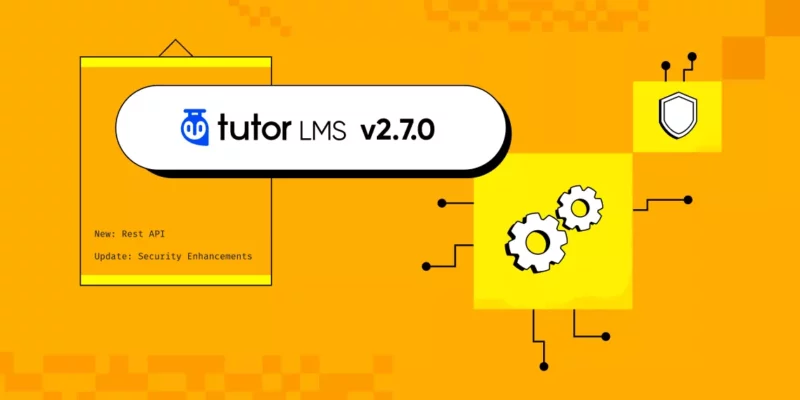People say learning is a complex activity for every human being. Is it really that complex, or maybe we just think like that?
We’ll come to this point later; let me remind you of something first. Humans are social animals by nature, right? We learn a lot from society from the very beginning of our life.
But, do you ever think about how much effort we put into learning from our society? Not so much, right? Yes, because learning becomes relatively easier and smoother when we learn something by interacting with others. That’s the simplest method of social learning!
Still need to clarify social learning? Don’t worry. Read on to find out the definition and principles of social learning, methods of incorporating it into eLearning courses, and the benefits of it.
What is Social Learning?
Social learning is one of the most popular and effective learning methods. It was developed by the Canadian psychologist Albert Bandura in 1977. It was the result of his Bobo Doll Experiment.
According to that experiment, children always imitate the behavior of adults. In a broader term, people always learn by observing and imitating other individuals. The method of learning by interacting with others is known as social learning.
This social learning method highly emphasizes the interaction and discussion method for a greater engagement and knowledge retention. It takes place in a whole community through interaction between students, aka peers. If you consider your class as a community, the students are peers here. According to the social learning method, students can learn a lot only by interacting and discussing with fellow students.
4 Principles of Social Learning
There are 4 principles of social learning according to Bandura’s method. These are:
- Attention: Every student should stay attentive while learning. Because we can’t learn something if we don’t pay enough attention to that particular task. By the way, the instructors also have to make their courses interesting enough to grab students’ attention. Remember, students will pay their full attention to your course content only if they find it unique, helpful, and intriguing.
- Retention: Retention is a significant part of social learning. If the trainer delivers too much information within a short span of time, it is more likely that students can’t retain that information properly. It doesn’t matter how many bells and whistles you have used in your lecture; everything will go in vain. That’s why make sure that students can learn something properly and can retain that knowledge in the near future.
- Reproduction: When it comes to online learning, you should ensure that students have acquired new skills from your class. The only way of testing whether the acquired new skills or not is by reproducing something. If someone watches rowing a canoe, reproduction means getting on a canoe and rowing it themselves. You can say students have learned something successfully only if they can reproduce something using their own knowledge.
- Motivation: Students can grasp knowledge properly only if they remain motivated enough throughout the whole training period. That’s why motivating students is a key principle of social learning. Just imagine this, in an auditorium full of competitive students, you have picked some students based on their excellent performance. It will definitely give them peer recognition. Such recognition will surely motivate those who learned to improve their performance even better.
All these four principles are equally important for social learning. As a trainer, you ensure that you’ve fulfilled all of these steps while designing an eLearning course.
Effective Ways to Incorporate Social Learning into Your Tutor LMS Courses
There are multiple ways of integrating social learning into your Tutor LMS eLearning courses. Now we have already introduced you to the social learning definition and principles, it’s time to incorporate those in your eLearning course. Let’s look at some effective ways of incorporating social learning into your Tutor LMS courses.
- Conduct Live Q&A Sessions to Increase Real-time Interaction
Increasing real-time interaction is one of the best ways of keeping your students attentive and motivated throughout the whole course. And, conducting live Q&A sessions is the most popular way of increasing those interactions.
The live Q&A sessions are basically the questioning and answering sessions while teaching the students. In general, most of the instructors simply include a frequently asked question page and consider it done. But, that’s a huge mistake!
Every instructor should conduct live Q&A sessions with their students. It not only keeps the students engaged but also students can clear their doubts instantly. You know what, conducting live sessions on Tutor LMS is as easy as apple pie. You can use Zoom, Google Classroom, & Google Meet integration to conduct a live session.
Instructors can collaborate with their students via these online tools, like an offline class. Students can raise their hands to make a comment, share screens to collaborate efficiently, and many more only by using these tools. Overall, it keeps every student equally attentive and engaged with their tutor.
Tutor LMS supports Zoom, Google Classroom, & Google Meet integration in order to conduct live Q&A sessions with the students.
- Add Interactive Elements to Your Course Content
From the millennials to gen Z, our attention span has been dwindling. The average attention span of the millennials is 12 seconds – and it’s only 8 seconds for the Gen-Zers. That’s why it becomes a challenge for trainers to keep their students hooked on their online courses.
However, Tutor LMS has introduced a great method to keep students engaged in their online courses. This method is well known as gamification or gamified learning.
In short, gamification indicates adding various game-like elements to the eLearning courses. There are several benefits of adding gamification to your online course. Here are some of those:
- Gamification increases student engagement.
- It keeps the students motivated.
- It increases the social connection among them.
- Learning becomes more visible and attractive for the students.
- Adding gamification increases the higher performance retention, etc.
That’s why you must add gamification strategies to your online courses to ensure the highest level of student engagement. It literally satisfies the attention and motivation principle of social learning.
- Offer Rewards / Certificates to Motivate the Learners
Leveraging the gamification tactic definitely increases the student’s motivation. But, it works even better if you offer the students something in return for their extraordinary performance. It could be a badge, reward point, or something else. Remember, all of these rewards give a good feeling to the students and increase their motivation to achieve more rewards. After all, who doesn’t love to play and win?
You can offer multiple things for your students while using Tutor LMS on your website. For example:
- A special badge
- Reward points
- Levels
- Leaderboards
- Customized certificates, etc.
By the way, you can add even more rewards by integrating BadgeOS with Tutor LMS. Besides, Tutor LMS comes with a special certificate builder to design customized certificates for your students. Don’t miss that!
- Organize Panel-discussion or Symposiums
Every student wants to learn from the best! So, you should try to call a subject-matter expert to talk about their expertise on a specific topic. As the industry experts have specific knowledge in their field, they can assist the students better. Even the students are also eager to learn from industry experts.
Conducting sessions with the experts is beneficial in both ways. It not only influences the students to do something exceptional but also increases your network with the experts.
However, you may also arrange symposiums besides one-to-one knowledge-sharing sessions. The symposium is very much similar to the panel discussion. But, here you have to manage multiple well-known experts instead of one. Though it’s a challenging task for some tutors, symposiums are more engaging, interactive, and acceptable among the students.
- Utilize Cohort-based Learning
Cohort-based learning models are collaborative, strength-based, and community-inspired. It is the process of creating smaller groups and letting them learn different topics in their own way. It allows the student to increase their analytical ability. Besides that, it motivates almost every student to participate actively, which results in a higher course completion rate.
In order to create a cohort-based learning process, you will need to integrate the BuddyPress plugin with Tutor LMS. It utilizes the social media aspects of your eLearning website. There are several benefits of integrating BuddyPress with Tutor LMS. Here are a few of those:
- Creating custom groups
- Peer-to-peer messaging
- Forum discussion
- Activity feed, etc.
By the way, you have to make sure that the group is small enough to facilitate the most effective interaction. Thus the students can learn from one another without leaving no students behind. If the class is too big, there’s a higher chance that someone might fly under the proverbial radar. So, it is important to create an effective cohort-based eLearning course in order to incorporate social learning in your course.
- Facilitate Group Discussion Among Learners
Group discussion might be the best way to engage the learners with one another. It not only removes the communication gap but also increases social interaction among the students. Tutor LMS offers lots of engaging tools to make group discussions more effective and appealing among the students.
For example, students can use tools like video conferencing, audio, whiteboard, instant messaging, etc to make their online discussion more productive. However, the discussion doesn’t need to be on a specific topic all the time. Let the students decide whether they want to discuss a generic or specific topic on that day. It gives them the feeling of freedom and control, which is ultimately beneficial to increase their leadership skill.
By the way, it’s your duty to ensure that everyone attends those group discussions equally. Because the loudest one always gets more room in general. So, make sure that every student, including the introverted one, is also being benefited from the group discussions.
Overall, all of these technology-driven learning methods bring something good to the plate. While developing your online course, try to leverage social learning in order to foster an effective learning platform.
Perks of Using Social Learning
Social learning has had its roots since the very beginnings of human evolution. But it has become so popular now because we can measure the benefits of social learning now. So, let’s shed some light on the perks of using social learning in your online courses.
- Increase Learner’s Engagement
Getting bored with traditional learning methods is pretty normal for students. But, you can omit the students’ boredom by incorporating social learning in your eLearning course.
- Higher Course Completion Rate
The social learning method keeps the students hooked on their online courses. Thus it results in the highest course completion rate possible. A report from Harvard Online Business School (previously known as HBX) shows that incorporating social learning in their online courses has increased their course completion rate by 85%!
- Continuous Development
In the social learning method, every student has to engage with others throughout the whole course. It helps the learners to think outside the box as well as come across different points of view on the same topic. Thus it continuously develops the student’s critical thinking ability.
- Increase Productivity
The proper usage of social learning has a direct effect on students’ productivity. While the learners communicate with one another and learn something new, it tends to increase their productivity level. A research by Stanford University School of Medicine revealed that around 45% of their physicians benefited directly after incorporating social learning into their patient-care app named “Figure 1”.
- Improve Analytical Skill
Achieving a greater analytical skill means examining the facts and finding the most accurate result after resourceful research. As social learning helps the student to actively participate in group discussions with expert people, it drastically helps to improve their analytical skills. Besides, the cohort learning process gives them the opportunity of implementing analytical skills in their everyday learning.
Final Words
The benefits of online learning cannot be ignored in this post-covid era. And the most challenging part of those online tasks is keeping the students engaged by building interactions. Thanks to Albert Bandura’s social learning method for making this interaction easier.
Now you simply use Tutor LMS on your eLearning website, implement the social learning methods described above, and you are good to go! You can also build an educational app with a DIY tool like AppMySite and offer students a way to learn effectively on mobile devices. These simple tactics are enough to offer the best learning experience to all of your students.
Hopefully, it answers the question we’ve asked in the very first section. Actually, learning isn’t hard! Just implement social learning properly and have fun while learning!



